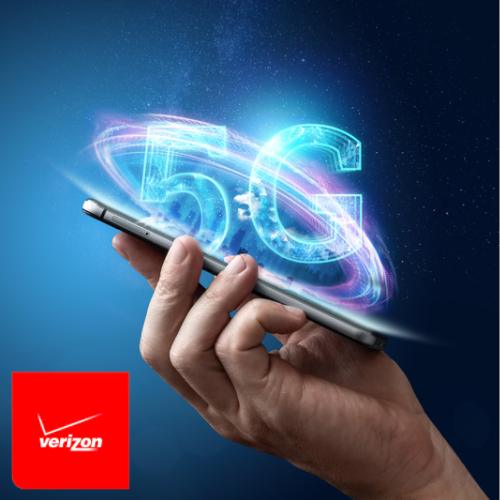
Last week, we reported that Verizon Wireless would be adding more C-band coverage to 30 additional markets this year. This is happening about a year ahead of schedule.
With a budget of more than $45 billion, Verizon obtained C-band at a FCC auction and received an average of 161 MHz nationwide, including 60 MHz in the top 46 markets, which is where it’s already deployed covering 100 million people. Additional markets covered by the so-called “A block” licenses in the 3.7-3.8 GHz range, weren’t expected to be ready until the December 2023 time frame.
Verizon can utilize those A block licenses now to deploy its 5G Ultra Wideband service “on at least 60 MHz of spectrum and up to 100 MHz of spectrum in some areas.” Those include large metro areas of Atlanta, Baltimore, Washington D.C., and Denver.
The second part of the C-band rollout, which is an additional 180 MHz of spectrum between 3.8 GHz-3.98 GHz, remains on track to be cleared in December 2023, according to a Verizon spokesperson.
In addition to the amount paid for the licenses, Verizon owed clearing costs to ready the band plus incentive payments. This enticed satellite operators to speed up the process and they made the spectrum available earlier.
Roger Entner, principal and founder of Recon Analytics, says he expected things to play out as they are. Following the auction, the FCC encouraged satellite players and license winners to negotiate for faster clearing times.
Due to the quicker schedule, Entner says Verizon is paying additional money to those like SES, however the carrier declined to disclose details on the contracts.
Verizon will also likely be quick to gain access to any A-block spectrum that is not covered by current agreements.
“You can bet they are heavily negotiating with the other satellite providers to also clear that out and so that they can accelerate this even further,” Entner said, adding those payments would be less as there’s a time value component – say for six months early versus a year.
With so much competition from T-Mobile lately, it’s clear why Verizon has been moving so quickly to deploy C-band service. They started by increasing coverage from zero to 90 million when it launched on January 19. Then, it increased by 5 million one week later, and now they are up to more than 100 million.
“This early spectrum clearance is just the latest development that allows us to bring 5G Ultra Wideband to our customers faster,” said Kyle Malady, EVP and president of Global Network and Technology, in the announcement. “We’ve been able to accelerate deployment because we’re driving more efficiency and coverage from the C-band spectrum, leveraging opportunities like the one we are announcing today, and leveraging our already in place infrastructure. In my career with Verizon, I have never experienced a network deployment move so quickly.”
A-block Licenses
While AT&T focused on less expensive B and C block licenses, Verizon set its sights on A block licenses during Auction 107. This is part of the key to 5G C-band access.
“Their game plan is coming nicely to fruition,” Entner said of Verizon’s focus on those licenses. “They’re getting the markets faster.”
According to Entner, Verizon is getting a full 100 MHz of C-band earlier than expected in certain locations. To users in some cities smaller than the top 46 Partial Economic Areas (PEAs), this could mean faster bandwidth speeds even sooner than those in the largest markets would receive. The reason for this is that, of the earliest available A block C-band, Verizon has 60 MHz in those 46 markets while AT&T has 40 MHz. They are essentially sharing the 100 MHz A-block until 2023, which is when AT&T is expected to shift to the B/C block license channels. After that, Verizon will obtain its full amount of A block spectrum.
Even so, Verizon can always negotiate to have full access in any of the markets smaller than the top 46, Entner noted. That was made evident when Verizon recently announced the full 100 MHz for some markets.
C-band
As it’s been said multiple times before, Verizon needs to step up their competition and pushing up its C-band deployment to cover more people with mid-band 5G is going to be the key to this.
“Verizon really needs this,” Entner said of the faster C-band deployment timeline.
The carrier gained new subscribers last year, but not net accounts. Essentially, their growth was solely from existing customers adding new lines, Entner explained.
“That is not sustainable, it’s like wringing water out of an already dry sponge,” Entner said.
Most might say this is because of the premium price Verizon has been known to charge for their service. This has become more challenging for the carrier as third-party speed results continue to show T-Mobile as the 5G network leader for speeds and coverage.
“And when the claim and reality become divergent, you have a problem,” Entner said.
Consumer perception and lack of account growth is “why they [Verizon] really need C-band and C-band fast, so that they can close the gap with T-Mobile,” he continued. “So that T-Mobile can’t say ‘I have a faster network and I’m cheaper’ to consumers.”
Speeding up the deployment of C-band could help Verizon to catch up with T-Mobile. Although they have big plans to reach 300 million people with mid-band spectrum by the end of 2023. Verizon only expects to cover 250 million by the end of 2024.
For comparison, AT&T is set to cover 200 million people by the end of 2023 with mid-band 5G, including 3.45 GHz spectrum.

